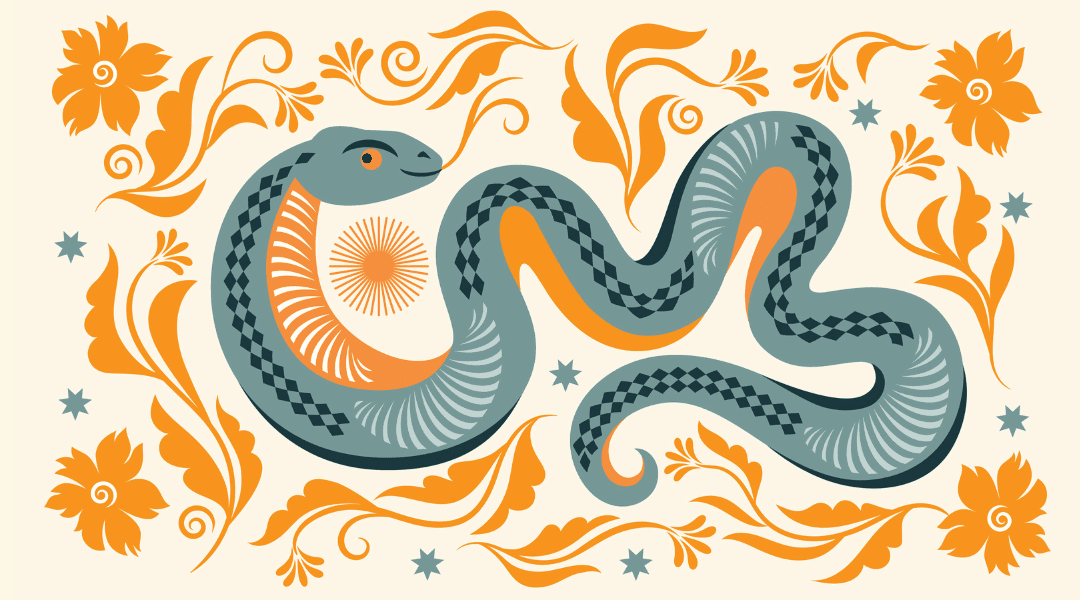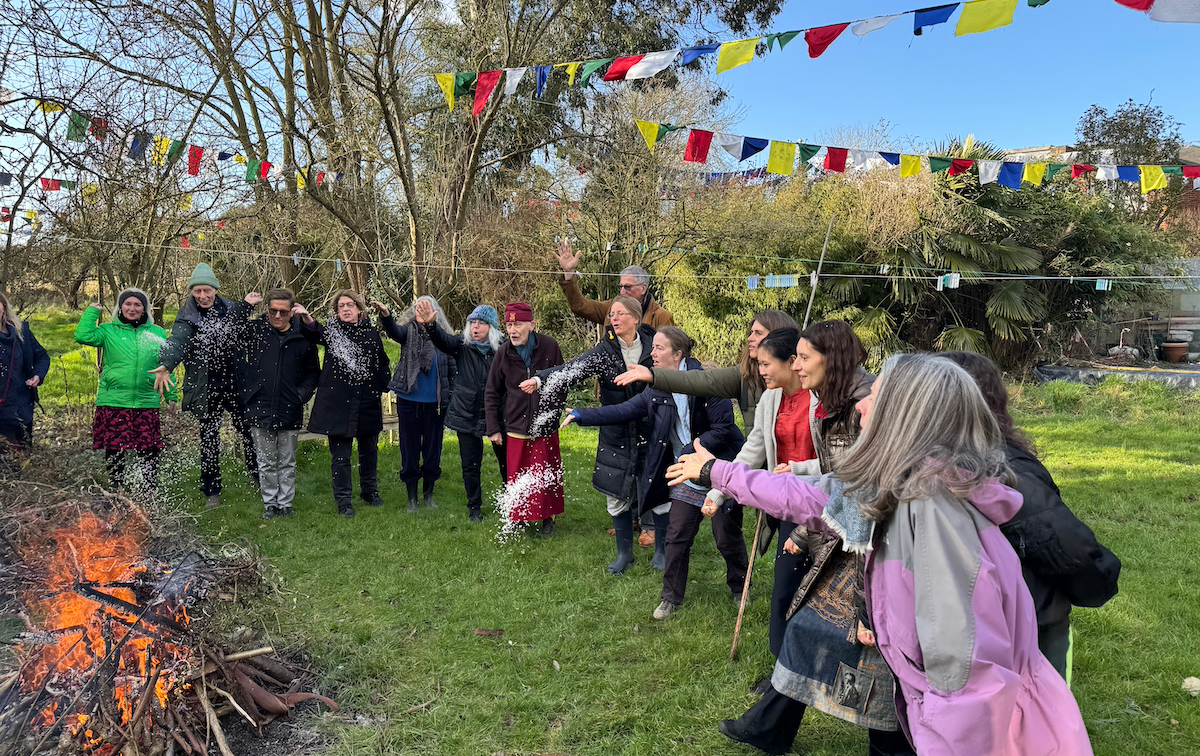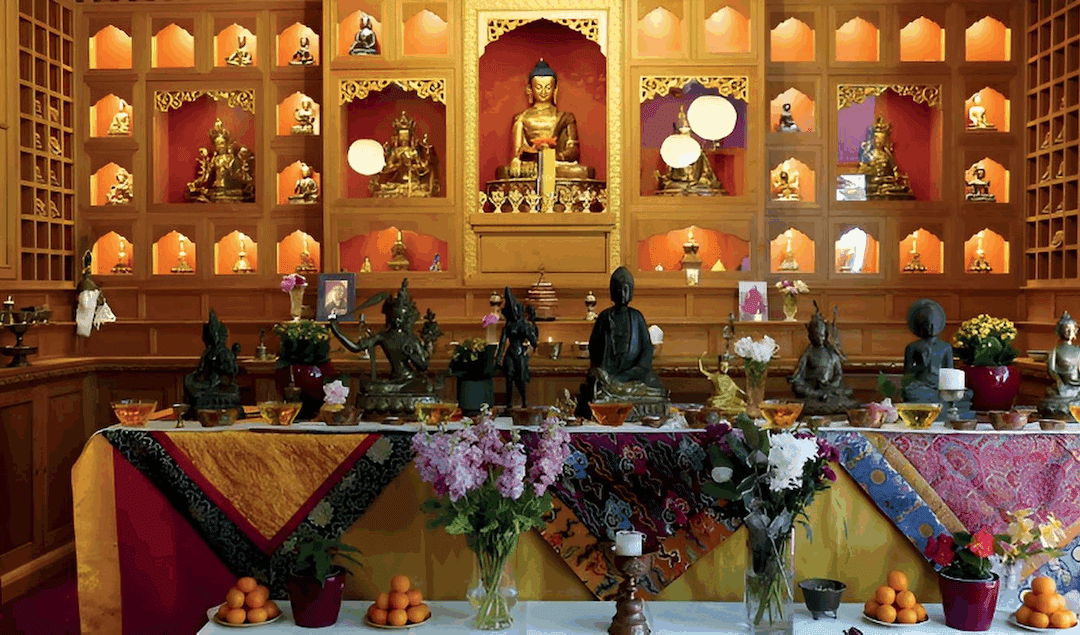
Celebrating Losar 2025
Losar Tashi Delek!
The Saturday celebration was a chance for those of us who hadn’t been at Marpa House during the week to celebrate the new year. A week of Mahakala pujas & torma making culminating in the year of the wood snake on Friday, February 28th.
The house was humming with welcoming, flowers, plating & arranging offerings. Hasty greetings, hasty cups of tea. Kataks were placed thoughtfully by the shrine room door.
Once in the shrine room, we presented our kataks with Lama Alastair standing by. Rinpoche’s beautiful New Year’s poem had touched all our hearts and ‘Calling the lama from afar’ was truly heartfelt. It was such a happy occasion to be singing alongside friends, and apparently, from the depths of the kitchen, it had sounded particularly harmonious. A short meditation, prayers for Rinpoche’s long life and good health, then dedications. We were reminded of the preparations leading up to this occasion and thanks followed to all who had worked so hard to make the week possible. Thanks especially to Lama Alasdair for his calm presence as always & for sharing his knowledge & skills so patiently.
Lama Alasdair ran through what the new year represented – a fresh start, a clean slate. The past is gone, and we can’t do anything about it, but we can do something about the future. Let go of any new mistakes. The bonfire ritual was explained with grains of rice representing negativity which we then throw on the fire with the words Ki Ki So So Lha Gyalo! preceded by three long ohh.. ahh..ohhs.
Waiting around the well-behaved bonfire, there was a slight pause and we became aware of our grains of negativity beginning to burn holes in our hands. We duly chanted, threw our rice and watched the bonfire burn. In the spring sunshine a short speech to wish Myrto well as she returns to live in Greece. Then the thought of tea and time to head back to the house for a brilliant feast. The fire then beckoned us back so tea round the bonfire it was.
Time to sit in the sun with the snowdrops – memories of Tenzin – chat & catch up. We talked, laughed, relaxed and had fun. We missed the people who used to be here and watched the fire slowly burn. We saw animal shapes in the glowing embers. As the fire turned a deep shade of orange, the embers blackened, and the ash turned white. When the sun went down, it suddenly got cold. Back to the house and home. Hugs, kisses, thank yous & goodbyes. A sneaky bit more cake then more waves and goodbyes.
In the breath of an afternoon, cobwebs had been blown away, spirits lifted, and purpose strengthened. We felt happy, positive & lighter. As we left, a spectacularly red sunset glowed right across the sky, the colour reminiscent of a Tibetan robe.
Susan Mumford © 2025


